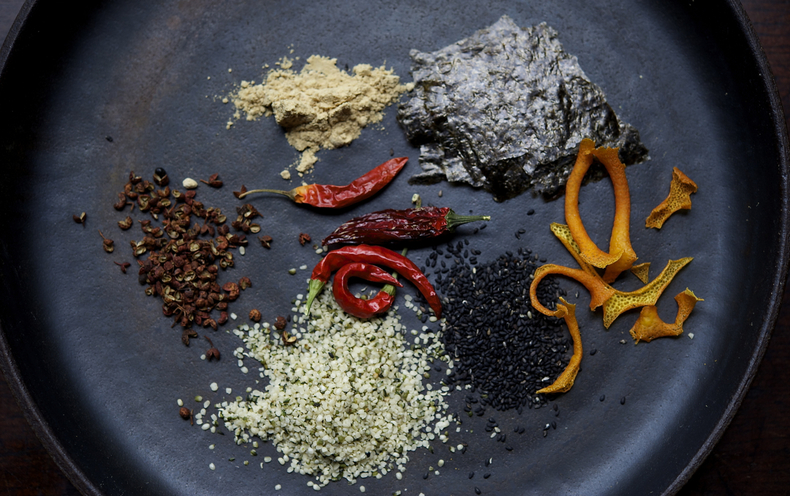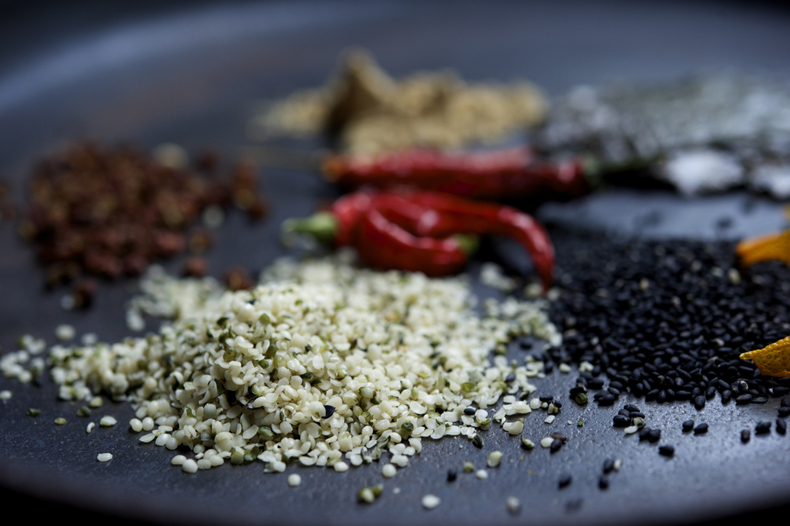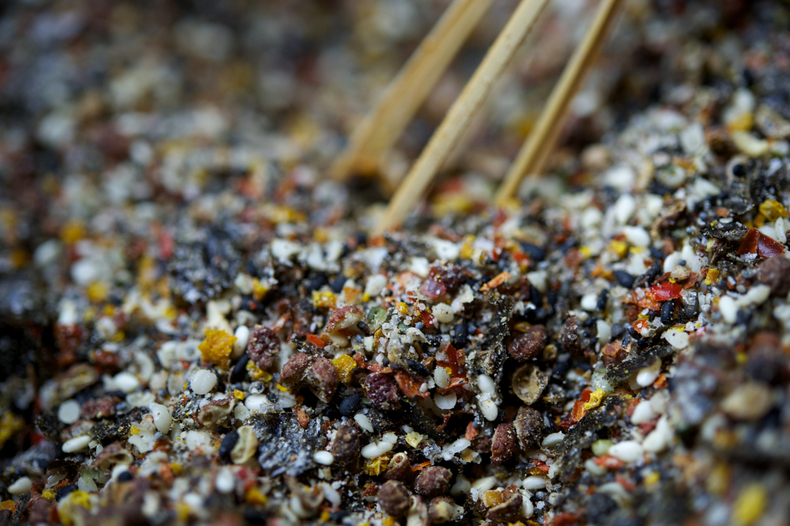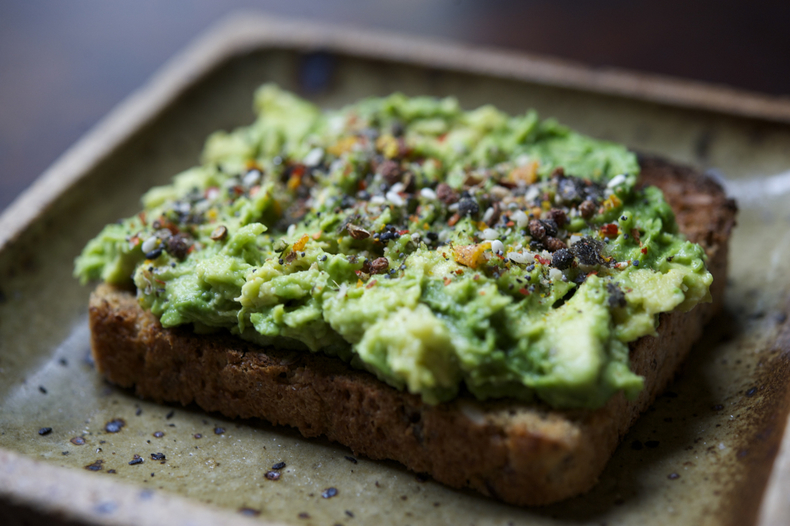8.18.15 Lucky Seven

We read a lot these days about cooking simply—"ingredient-driven cooking" is a phrase that flummoxed me when I first heard it. What cooking isn't driven by ingredients? Since when are the ingredients not supposed to shine? But I think I was just being purposely obtuse because, of course, there are entire schools of cooking that are all about technique. Just learn to make this perfect sauce and the quality and provenance of your pork loin won't matter. That sort of thing. So, really, my cooking is entirely driven by the ingredients. But that doesn't mean I don't like to build layers of flavor in the dishes I make. One of my favorite ways is with finishing. I have an arsenal of powders, oils, salts and other garnishes and condiments that act as perfect punctuation marks, underscoring a particular note or adding an element of surprise. Although Maldon salt in all its crunchy salinity often suffices, sometimes I reach for something more complex, like this version of shichimi togarashi.

This blend of seven spices is commonly used in Japan as a final seasoning on eel, soups, noodles, tempura and yakitori. As in all things Japanese, there are certain prescribed ingredients, most often red chile (ichimi), dried orange or tangerine peel, white and black sesame seeds, sansho pepper, roasted seaweed (nori) and ginger. Sometimes poppy seeds, yuzu peel or garlic make an appearance. You can moderate the heat with the kind of chile powder you use; I make my own with chiles de árbol, which are quite spicy, even after removing the seeds.

As usual, I've gone off the reservation and created my own blend. I've added two unothodox ingredients: hemp hearts, because I like their nuttiness and nutritional benefits; and sea salt, because I wanted to use this seasoning as I might a finishing salt.

The traditional mix includes sansho pepper, which is actually the unripened green seedpod of the Japanese prickly ash. It has a sharp, citrusy taste that makes your tongue go all tingly and numb. A reasonable subsitute, and perhaps a bit easier to find, is the Szechuan peppercorn, above, a ruddy pod with similar properties.

Wondering about that dried citrus peel? Just use your vegetable peeler to remove strips of the (washed organic) rind from an orange and dry it on a baking sheet in your oven, set to 170 degrees, until it's crisp, probably an hour or so.

You can bash the spices in a mortar and pestle, ideally the traditional Japanese suribachi, or use your spice grinder, as I do. (If yours doubles as a coffee grinder, remember the trick of running some dried white rice through it to help neutralize odors.)

Once you've got a jar of this unique seasoning on hand, you'll be hard-pressed to find a dish it doesn't enhance. I won't embarrass you with a "recipe" for avocado toast (why is that suddenly such a thing?!) but sprinkle some on your next version. I also love it on buckwheat noodles, on scrambled eggs, on any Asian-inflected salad, on cheese (possibly sacrilegious) and even for cocktails—infused in the alcohol, as in this one, or on the rim. Step aside, variety. Shichimi togarashi is the new spice of life.
Shichimi Togarashi
- — 3 tablespoons white sesame seeds
- — 2 tablespoons black sesame seeds
- — 2 tablespoons poppy seeds
- — 6 tablespoons Szechuan peppercorns
- — 2 tablespoons crumbled dried nori (roasted seaweed)
- — 6 tablespoons dried orange peel
- — 4 tablespoons chile powder
- — 2 tablespoons hemp hearts
- — 1/2 tablespoon ground ginger
- — 3 tablespoons coarse sea salt, optional
In a small, heavy skillet over medium heat, lightly toast the white sesame, black sesame and poppy seeds. Remove to a medium bowl and set aside to cool.
In a spice grinder combine, two-thirds of the toasted seeds with the peppercorns and process to a coarse texture. Add back to the bowl.
Grind the nori and dried tangerine peel to a slightly finer texture. Add this to the bowl along with the chile powder, hemp seeds, ground ginger and salt, if using. Stir well to combine.
Transfer to an airtight container and store in a cool place for up to 4 months.
 Download Recipe
Download Recipe






4 Comments